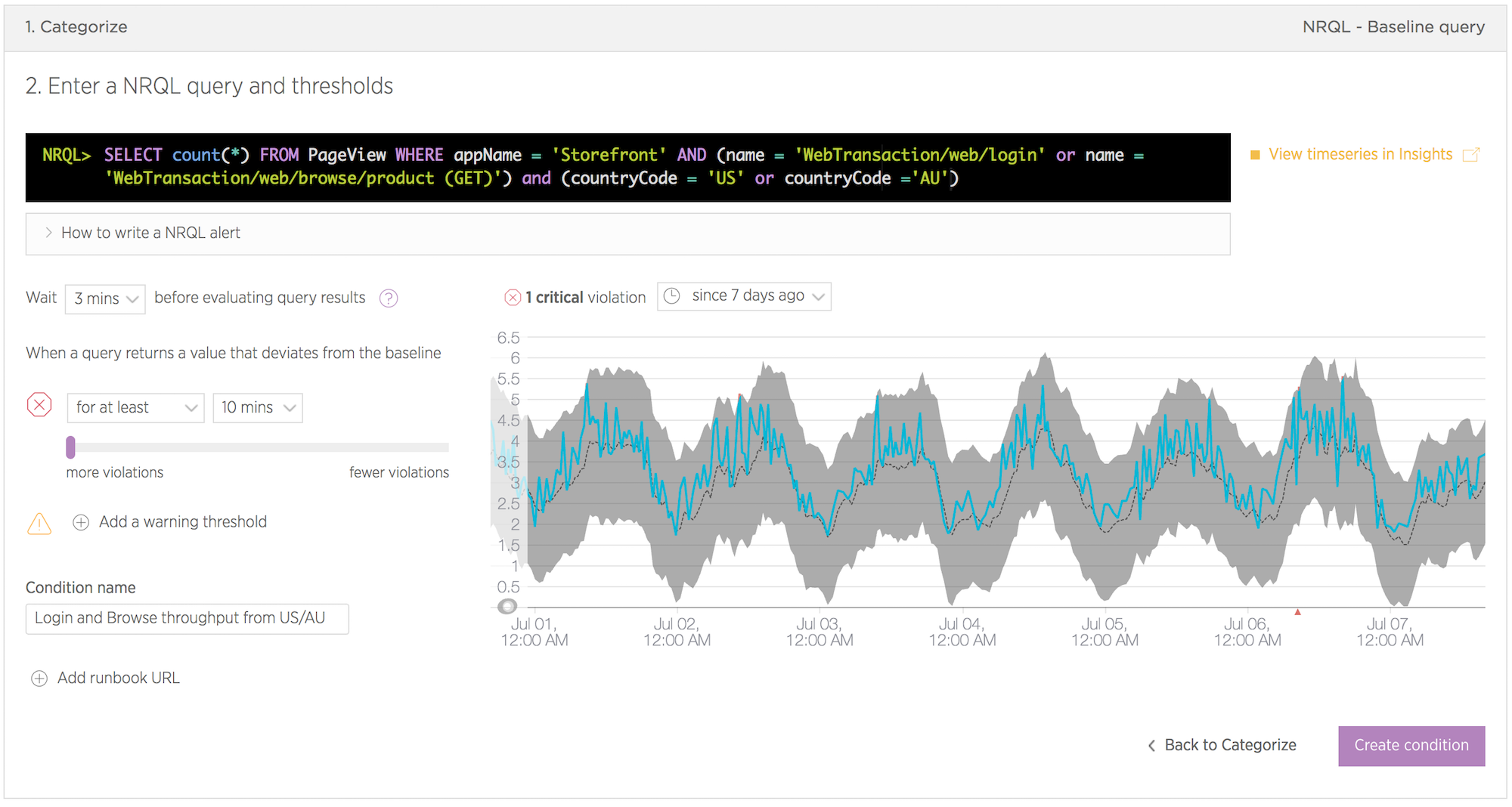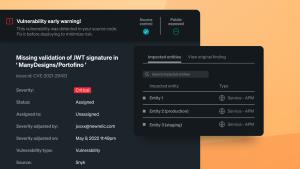Combining the powers of New Relic Query Language (NRQL)—our flexible event query language—and our Dynamic Baselining technology, New Relic customers can now alert on the anomalous behavior of time-series metrics generated by NRQL queries!
Remember NRQL Alerts?
A few months ago we released NRQL Alerts and showed off a ton of ways customers were using the new feature.
The key takeaways:
- NRQL is super flexible and lets you query and filter your performance data in ways never before possible.
- We connected our query engine to our alerting engine and—voilà!—teams could operationalize on the super-specific metrics they were tracking in New Relic Insights.
Remember Dynamic Baseline Alerts?
Then, last month we released Dynamic Baseline Alerts, designed to make it easy for New Relic customers to set dynamic alert thresholds on their key application performance metrics, using baselines modeled from historical application metric data. Key takeaways there included:
- Create alerts with confidence. Dynamic Baseline Alerts dramatically reduced the guesswork required to create baseline conditions. You can now instantly see how many alerts you would have received in the past week with the values you select.
- Establish dynamic thresholds. Dynamic Baseline Alerts are, well, dynamic. They predict the future based on the past and adapt to overall trends as well as weekly and seasonal patterns.
- It gets better every day. New Relic is a 100% SaaS monitoring company that can instantly ship new and improved versions of our algorithms, and our amazing ensemble approach to automatic algorithm selection always chooses the best one, so you know you’re always getting our best possible solution.
- Minute-scale granularity reveals short-lived anomalies. We calculate our baselines at minute-scale frequency so Dynamic Baseline Alerts can detect anomalies that might escape other solutions.
Add them together and … genius!
Ultimately, NRQL Baselines are as simple as taking the great parts of querying your performance data with NRQL and adding in the the awesomeness of our Dynamic Baseline Alerts.
Let's look at an example and see what you can do with NRQL Baseline Alerts. First, check out this screenshot:

Now, let’s break down this query and determine what it is measuring. In plain English, it says, “show me the number of pageviews on my Storefront app for my two most important pages (Login and Browse Product), where visitors are from either the United States or Australia.”
This is a pretty specific measurement. As you can see in the time series chart, the results vary quite a bit by time of day and day of week. Setting a static threshold on this time series won’t likely work out too well.
But look at the dotted line (the baseline) and you can see that the grey band (the dynamic threshold) is tracking it pretty darn well. The condition will trigger when the number of pageviews is abnormally high on a weekend or in the middle of the night when traffic is supposed to be low, as well as when traffic is low during business hours when we should be serving most of our customers.
Other use cases
Honestly, the list of possible use cases for NRQL Baseline Alerts is virtually endless. So rather than making you wade through a long list of queries and explanations, this short list of questions to consider can be a reusable tool to help you come up with your own uses tailored to your particular team and company:
- What segments of your customers and your data are interesting to you? (For example, customer location, subscription type, account IDs, user IDs)
- Are you adding this metadata to your performance events?
- Can these segments be combined to create new key performance indicators of your services?
- Is the resulting time series a strong signal? The stronger the signal, the better the baseline predictions.
Where can I get more info?
NRQL Baseline Alerts is generally available today for all New Relic customers with an active Pro subscription or higher. If you want to learn more about the topics in this post, check out these additional resources:
- Guess Less: New Relic Dynamic Baseline Alerts Go GA
- Dynamic Baseline Alerts Now Automatically Find the Best Algorithm for You
- How We Find the Best Algorithms for Dynamic Baseline Alerts
- NRQL Alerts Will Change How You Think About Using New Relic Data
- Documentation: Create Baseline Alert Conditions
The views expressed on this blog are those of the author and do not necessarily reflect the views of New Relic. Any solutions offered by the author are environment-specific and not part of the commercial solutions or support offered by New Relic. Please join us exclusively at the Explorers Hub (discuss.newrelic.com) for questions and support related to this blog post. This blog may contain links to content on third-party sites. By providing such links, New Relic does not adopt, guarantee, approve or endorse the information, views or products available on such sites.



